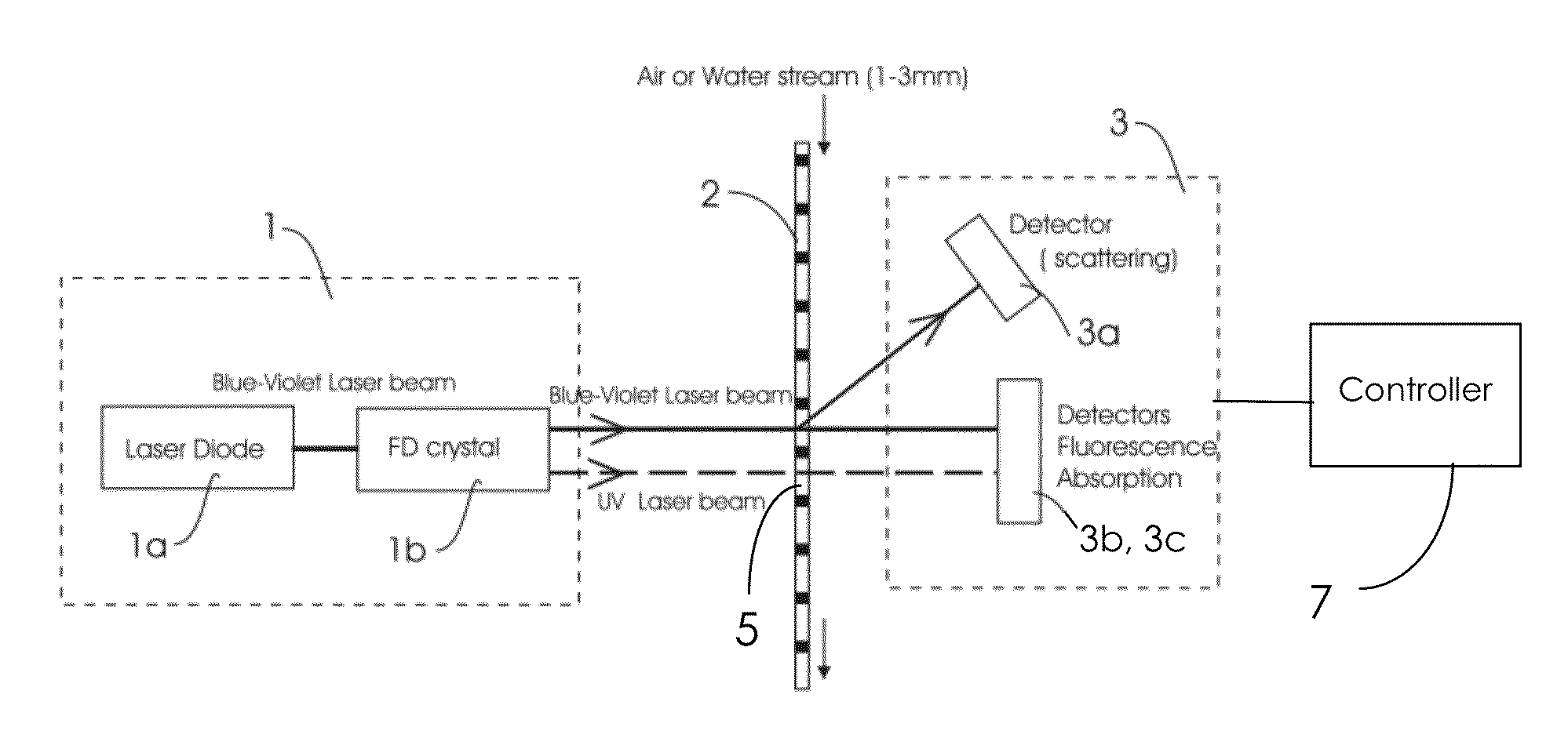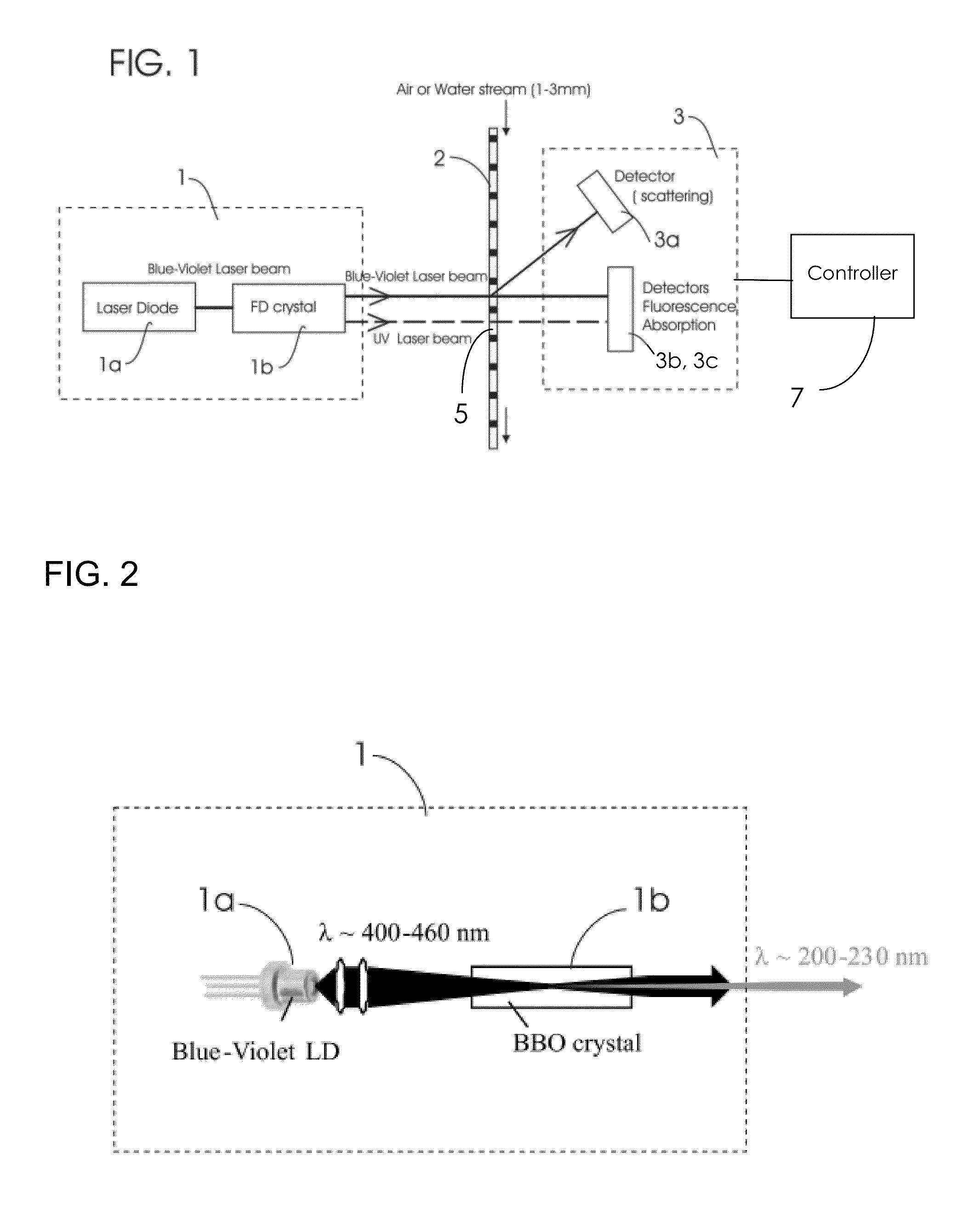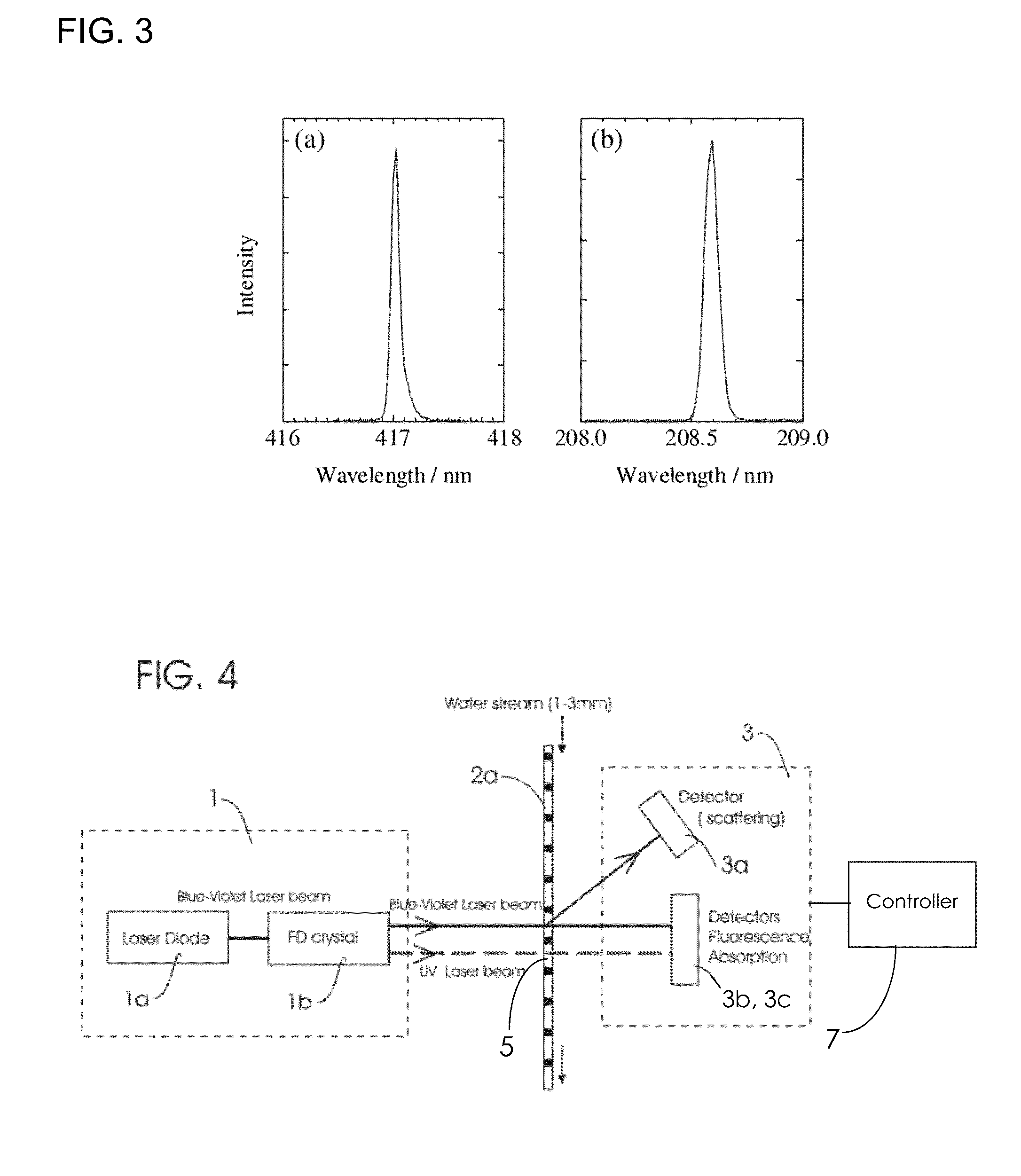Fluid purification and sensor system
a sensor system and fluid technology, applied in the field of fluid purification apparatus, can solve the problems of poor performance below 260 nm, short operating life and long warm-up time, and toxic materials in mercury lamps
- Summary
- Abstract
- Description
- Claims
- Application Information
AI Technical Summary
Benefits of technology
Problems solved by technology
Method used
Image
Examples
example 1
[0076]An exemplary preferred embodiment of the present invention is now described with reference to FIG. 4. The system illustrated in FIG. 4 includes a conduit 2a that provides a flow path through which a steady flow of water passes. A conduit diameter in the range 1 to 10 mm is preferred, and 3 mm is most preferred. A water flow in the range 0.1 to 3 litres per minute is preferred, and 1 litre per minute is most preferred. The conduit contains an optical window region 5 that is transparent to light in the wavelength range between about ultraviolet and infrared, and thus is transparent to wavelengths of light of the first blue-violet laser light beam and the second ultraviolet laser light beam. The optical window region 5, for example, may be crystal quartz.
[0077]The pair of laser beams provided by the dual wavelength laser component 1 are split and then directed onto the water flow via the optical window region. The UV laser beam typically will be absorbed by any biological particl...
example 2
[0081]Another exemplary preferred embodiment of the disclosed system is illustrated in FIG. 5. The embodiment of FIG. 5 includes conduit 2b that provides a flow path through which a steady flow of air passes. A conduit diameter in the range 1 to 10 mm is preferred, and 3 mm is most preferred. An air flow in the range 0.1 to 3 litres per minute is preferred, and 1 litre per minute is most preferred. The conduit contains an optical window region 5 that is transparent to light in the wavelength range between ultraviolet and infrared, and thus is transparent to wavelengths of light of the first blue-violet laser light beam and the second ultraviolet laser light beam. The optical window region 5, for example, may be crystal quartz.
[0082]The pair of laser beams provided by the dual wavelength laser component 1 are split and then directed onto the air flow via the optical window region. The UV laser beam typically will be absorbed by any biological particles or micro-organisms in the air c...
example 3
[0086]Another exemplary preferred embodiment of the disclosed system is illustrated in FIG. 6. The embodiment of FIG. 6 includes a vessel 4 which is periodically filled and emptied with a volume of air or water, and in which the volume of air or water is held for germicidal treatment and detection. A vessel volume in the range 10 to 1000 mm3 is preferred, and 125 mm3 is most preferred. The vessel contains optical window regions 6 that are transparent to light in the wavelength range between ultraviolet and infrared, and thus is transparent to wavelengths of light of the first blue-violet laser light beam and the second ultraviolet laser light beam. The optical window region 6, for example, may be crystal quartz.
[0087]The pair of laser beams provided by the dual wavelength laser component 1 are split and then directed onto the air or water volume via the optical window region. The UV laser beam typically will be absorbed by any biological particles or micro-organisms in the air / water...
PUM
 Login to View More
Login to View More Abstract
Description
Claims
Application Information
 Login to View More
Login to View More - R&D
- Intellectual Property
- Life Sciences
- Materials
- Tech Scout
- Unparalleled Data Quality
- Higher Quality Content
- 60% Fewer Hallucinations
Browse by: Latest US Patents, China's latest patents, Technical Efficacy Thesaurus, Application Domain, Technology Topic, Popular Technical Reports.
© 2025 PatSnap. All rights reserved.Legal|Privacy policy|Modern Slavery Act Transparency Statement|Sitemap|About US| Contact US: help@patsnap.com



